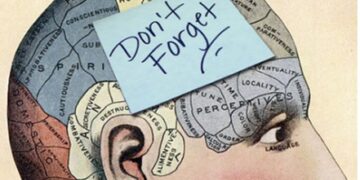By: Rajesh Kumar Singh
Sustainable economic development in the 21st century is driven by rapid technological advancements that have revolutionized the way we live, work, and interact. India’s digital infrastructure has been transformed significantly in recent years, with the government’s push towards digitization and increasing adoption of technology. With over 1.4 billion people, India is the second-largest internet user globally. India has over 800 million internet connections and an average monthly data consumption per subscriber of 16 GB+, displaying a staggering growth of 266 times since 2014.
The Indian government’s efforts to improve internet connectivity and telecommunication infrastructure have been significant in recent years, with initiatives such as the Digital India program and the National Optical Fibre Network (NOFN) project. In addition to these programs, the government has also launched the National Broadband Mission and the National Data Centre Policy, to facilitate the growth of data centres in India and promote the development of a robust telecommunication infrastructure. As a result, businesses and individuals can benefit from faster internet speeds, better network coverage and improved access to digital services.
To support its long-term development goals, India has built a world-class digital public infrastructure. The India Stack refers to a collection of commonly used digital public infrastructure in India. It is made up of three distinct layers: unique identity (Aadhaar), complementary payment systems (Unified Payments Interface (UPI),Aadhaar Payments Bridge, Aadhaar Enabled Payment Service), and data exchange (DigiLocker and Account Aggregator). These work together to provide online, paperless, cashless, and privacy-protected digital access to a wide range of public and private services.
The JAM Trinity – Jan Dhan, Aadhaar, and Mobile – is a key enabler at the heart of India’s transformed digital payment landscape. The Pradhan Mantri Jan-DhanYojana (PMJDY) is one of the world’s largest financial inclusion initiatives, launched in August 2014, with the goal of providing universal banking services to every unbanked household. Jan Dhan accounts, Aadhaar, and mobile connections have all contributed to the establishment of a Digital India. Besides, existing platforms have been leveraged for ensuring delivery of critical services such as online education, e-medicine, fintech, improved agricultural practices across multiple platforms, ensuring seamless service delivery to the last mile. Online systems like COWIN and digital certificates are being cited as success stories across the world today.
Industry players have also tremendously benefited from the digital potential of the Unified Logistics Interface Platform (ULIP) which is aimed at bringing ease of doing business in the logistics sector and reducing the average logistics cost in the country. Digital public infrastructure is also leading to the removal of entry barriers and democratizing access to wider markets. This is visible in the e-commerce sector as the Open Network for Digital Commerce (ONDC) which is paving the way for MSMEs to take advantage of the emerging opportunities.
To enable faster and efficient movement of goods, government has invested heavily in improving the country’s logistics infrastructure. GPS tracking, Radio Frequency Identification (RFID), and real-time monitoring have made logistics operations more transparent. The PM Gati Shakti Master Plan is a digital platform mapping details of all infrastructure and logistic facilities in the country on a geographic information system (GIS) map. Furthermore, the digitization of government services and processes has reduced the time and effort required for businesses to comply with regulations making it easier for investors to set up and operate their businesses in India.
The National Single Window System (NSWS) is a Government of India initiative that uses digital infrastructure to streamline government approval for businesses by allowing traders to electronically submit all required documents and information through a single portal, eliminating the need to visit multiple agencies and has reduced the time and cost of obtaining clearances and approvals. Another example that showcases the government’s efforts to streamline procurement processes is the Government e Marketplace (GeM), an online procurement platform that was launched with the aim of creating an inclusive, efficient, and transparent platform for buyers and sellers to carry out procurement activities in a fair and competitive manner.
Startup India initiative is a flagship initiative of the Government of India which aims at building a strong ecosystem for nurturing innovation and Startups in the country. Hon’ble Prime Minister had launched Startup India in 2016. India’s thriving startup ecosystem is a testament to the country’s digital infrastructure, which has provided entrepreneurs with the tools and resources they need to innovate and disrupt traditional business models. Over the last five years, India’s startup landscape has grown to become the world’s third largest, with over 92,683 DPIIT-recognized startups. DPIIT has also set up a dedicated portal for intellectual property rights (IPR) and introduced measures to streamline the patent application process,
Economic processes are continuously evolving with the changing needs of consumers and the environment. In the near future, emerging futuristic technologies would be an indispensable element of almost all economic and social activities. The challenge before us is to make these processes more inclusive and humane, so that the benefits could trickle down to the average person.
India’s digital infrastructure tries to promote “Ease of living on top of Ease of doing business”, as it aims to foster an inclusive and democratic landscape for both businesses and citizens to benefit.
The writer is Secretary, DPIIT, Ministry of Commerce & Industry





